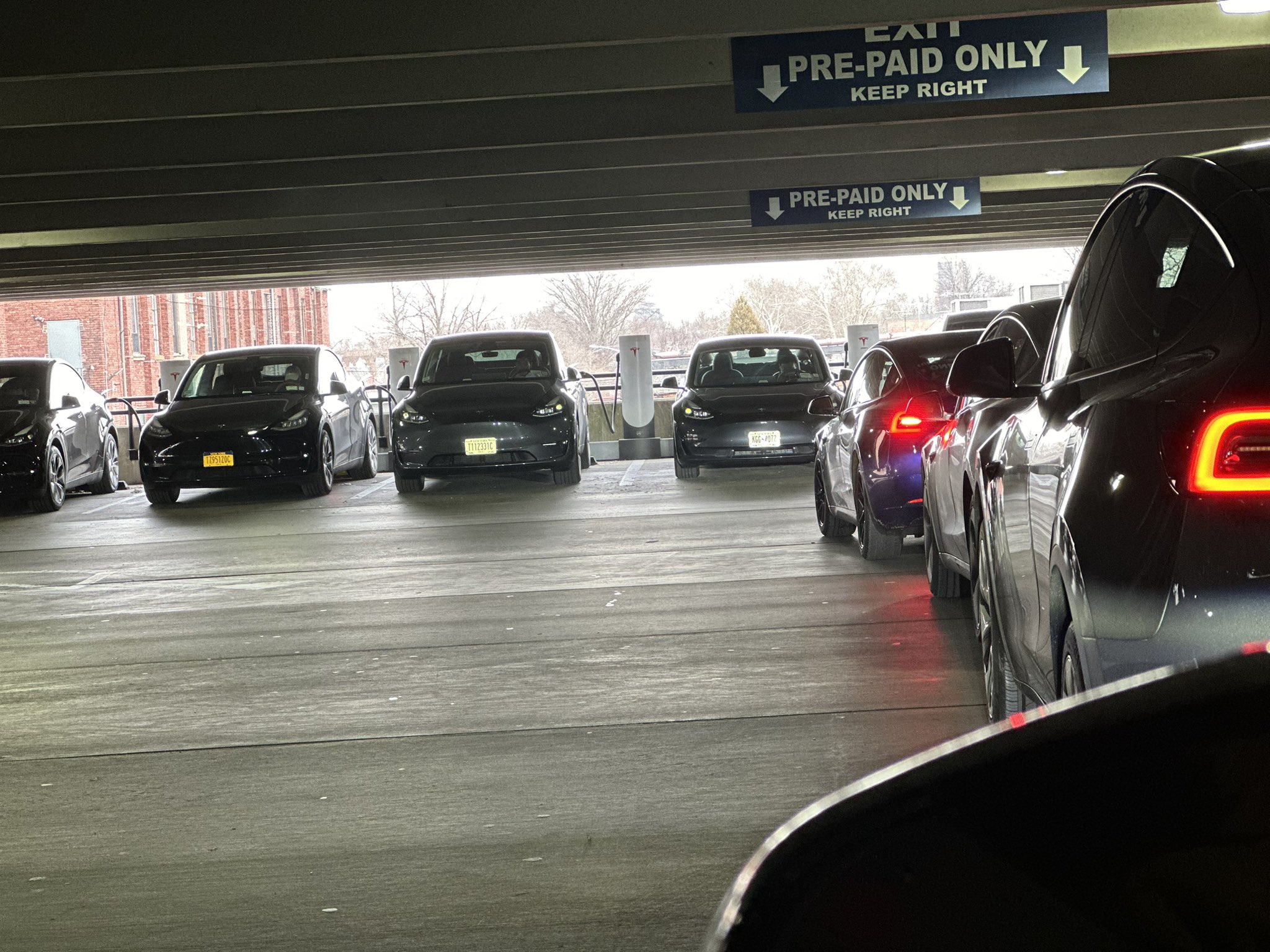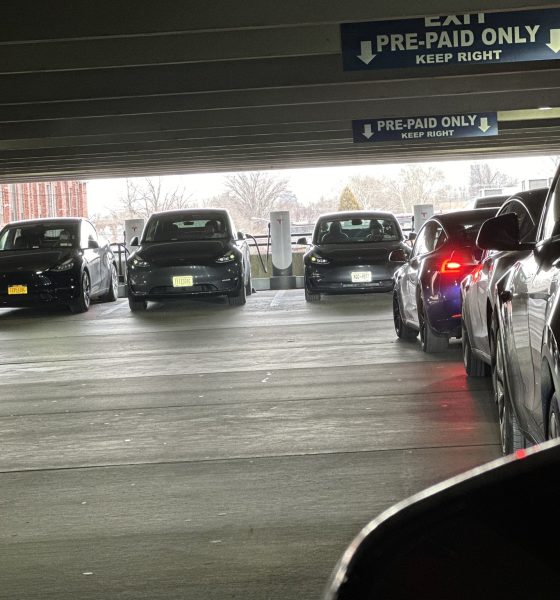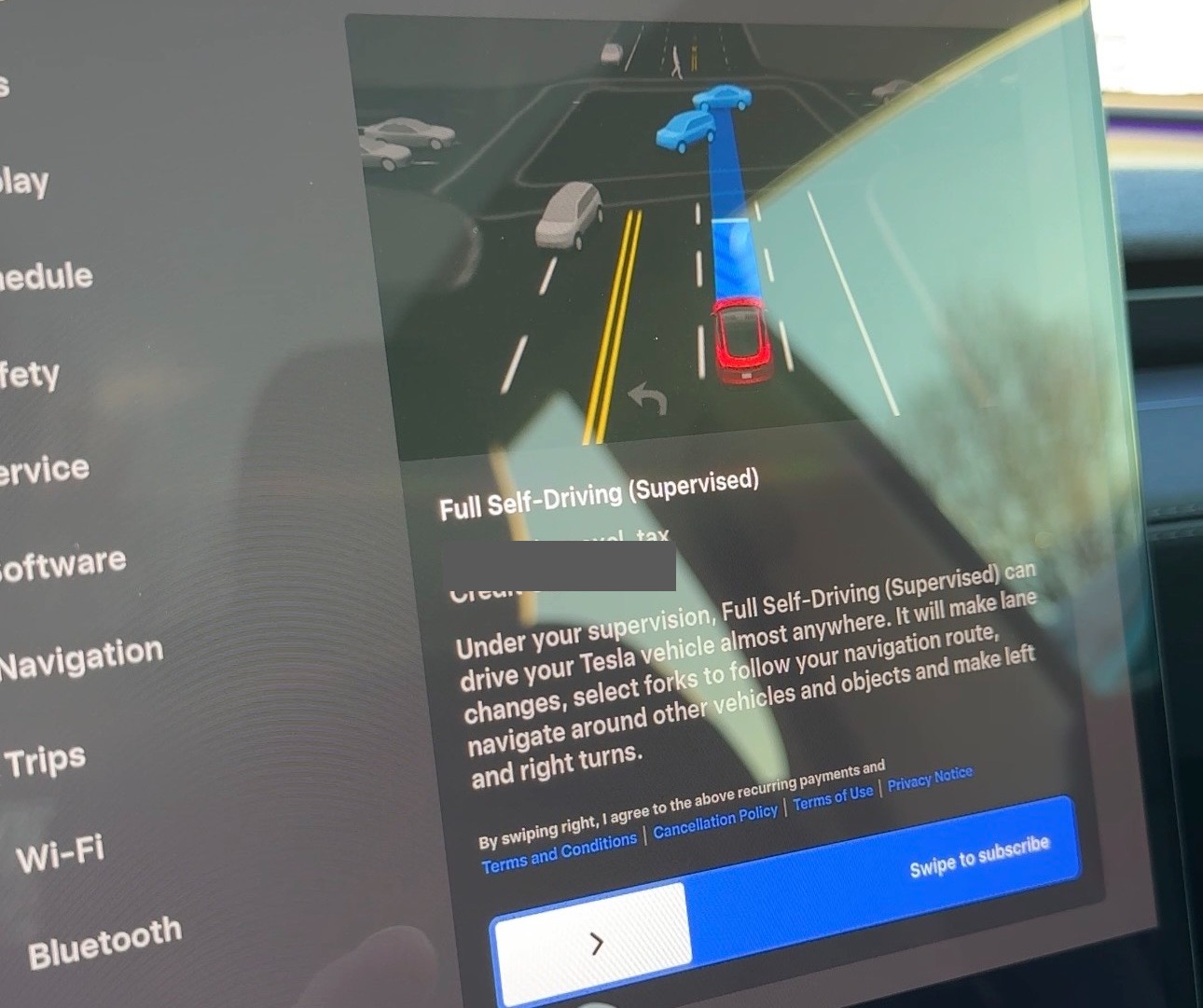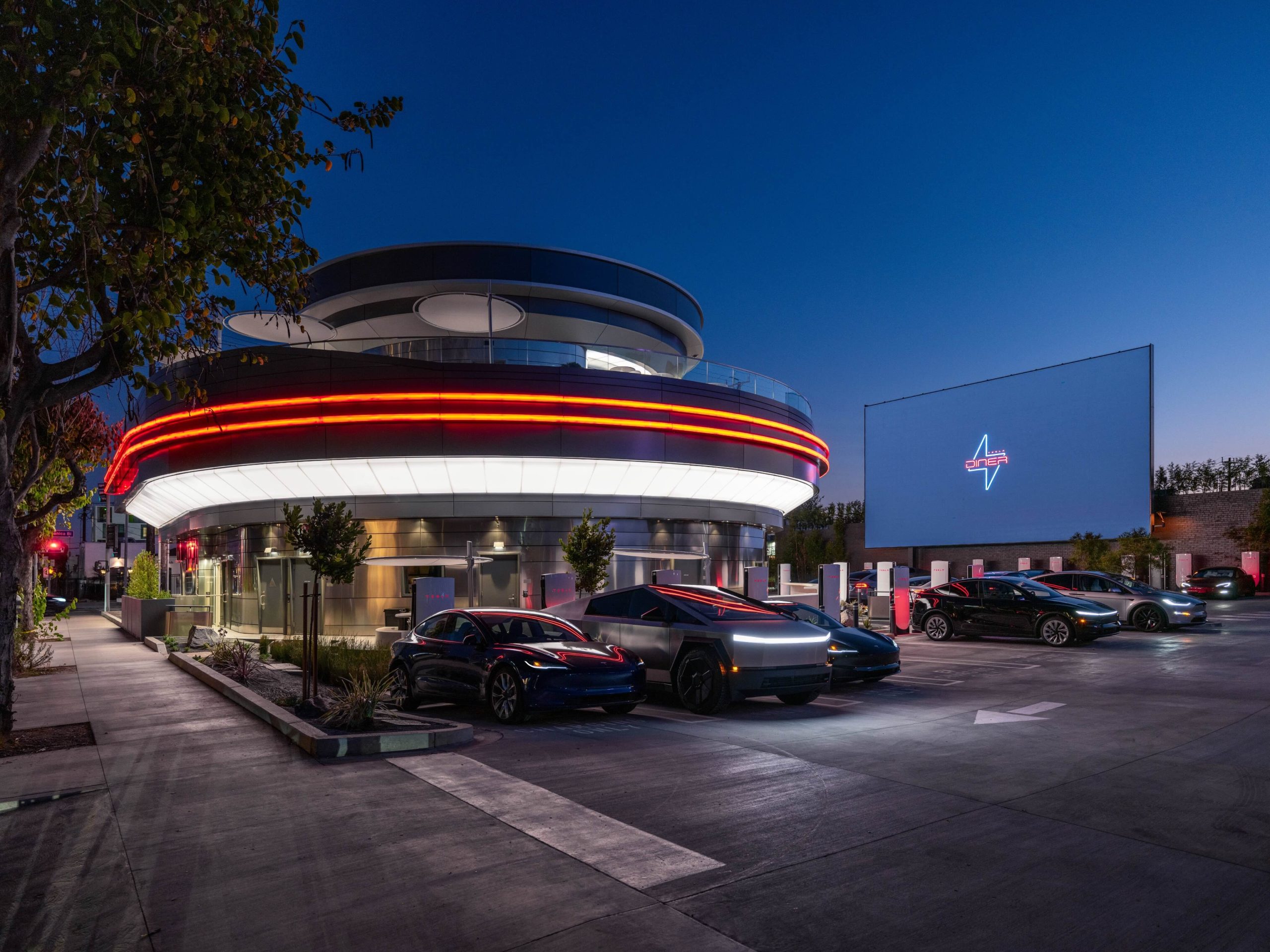

News
Tesla combats Uber, Lyft congestion in New York City with Supercharger Congestion Fees
Tesla is combatting Uber and Lyft congestion at its Superchargers in New York City with Supercharger fees after the ride-sharing services have backed up EV chargers.
This week, it appears the Superchargers are more congested than normal, and it could be due to the influx of Uber and Lyft vehicles at locations in Brooklyn and Queens.
Dear @elonmusk and @Tesla please consider increased demand for the superchargers (240kw) and make the new ones nearby these locations- #Brooklyn #BayRidge #BathBeach #Bensonhurst #DykerHeights #Forthamilton
Please, cooperate with Tesla – @NYCMayorsOffice @nyctaxi @Uber pic.twitter.com/fYmPNr9EOt
— Vako Ormotsadze (@VOrmotsadze) January 12, 2024
This is not a great experience.
We need more supercharger locations in NYC. As a Tesla customer we shouldn’t have to go through this, second time this week. @elonmusk @Tesla @TeslaCharging @WholeMarsBlog @heydave7 @SawyerMerritt @DirtyTesLa @DillonLoomis22 pic.twitter.com/GVybsMdq8w— Tesla Shill (@TeslaShill) January 17, 2024
Tesla has sent this message to drivers in the area, indicating that Active Supercharger Congestion Fees will be applied:
“Idle fees have been replaced by congestion fees at select Superchargers near you. Congestion fees accrue when your Supercharger is busy and your vehicle’s battery is above a certain level. This change helps reduce wait times and ensures that everyone has access to Superchargers when they need it.
Congestion fees apply when:
- Supercharger is busy
- Your vehicle’s charge is above the congestion fee charge level
View congestion fees and charge levels at which they apply on your touchscreen.”
The number of Lyft and Uber vehicles that applied for licenses through the New York City Taxi and Limousine Commission (TLC) was well over 9,000 units last year, and several NYC Councilmembers warned that this could cause congestion.
The TLC eliminated the cap on for-hire drivers as long as the vehicles are electric or handicap accessible, but there are now so many in the city that it is causing issues.
On top of this, there are only so many charging stations in the City, and several are operated by Revel, the ride-sharing service that fought the TLC for more for-hire licenses several years ago.
Tesla Model 3 wins hearts as famed NYC Taxi, picks up where Nissan Leaf couldn’t
As for congestion fees, Tesla launched them last year in an attempt to keep Supercharger lines moving when certain locations are congested.
Code from Tesla hacker green stated that the congestion fees would apply when vehicles are charging over 80 percent.
Potential Solutions
The big issue and core problem is that there are a lot of EV drivers in New York, but the infrastructure just has not gotten to a point where it can routinely handle an influx of cars that need a charge.
Revel has been expanding its network of EV chargers throughout New York City and plans to open more stations this year.
Spokesperson Robert Familiar told us:
“Revel’s public fast-charging Superhubs have seen about four times more public utilization in the last two months, which we see as a direct outcome of the Green Rides initiative. We’re anticipating an even greater uptick as more drivers look to skip long lines and hidden fees by charging at our higher-volume Superhubs.”
The 2018 Green Rides initiative has been great for EV adoption, but it surged demand so much that it generally outpaced infrastructure availability.
Jason Kersten, the Press Secretary of the NYC TLC, told me that there will be growing pains until the City is able to build out the appropriate amount of infrastructure. EVs are obviously a great thing for New York, and we talked in detail about the transitional phase that the City will go through over the next 11 years as it gears up for a 100 percent zero-emissions fleet.
TLC Commissioner David Do believes infrastructure will need to catch up as drivers under the Commission jumped at the opportunity to own EVs last year:
“In October, we gave TLC drivers the option of owning their own EV plates instead of continuing to lease gas-powered vehicles, and many of them jumped at it. They’re now hitting the road, leading the charge towards a cleaner and more sustainable city and sending a very clear message: We need more charging infrastructure. We’re doing everything we can to meet that demand as quickly as possible. That includes the city’s commitment to install 13 fast charging hubs in municipal parking facilities citywide, a new Bronx charging depot, and 30 fast chargers at TLC’s Woodside inspection facility.”
88 percent of the 9,756 applications the TLC received between October 18 and November 13 were from individual drivers, not companies. The TLC has, so far, approved 4,732 and continues to process applications.
The TLC and the City of New York have worked together to increase charging infrastructure moving forward. The efforts have resulted in $15 million in federal funding for a charging depot in the Bronx, 30 fast-chargers at the TLC’s Woodside inspection facility, and 13 municipal parking facilities citywide, among other things.
I’d love to hear from you! If you have any comments, concerns, or questions, please email me at joey@teslarati.com. You can also reach me on Twitter @KlenderJoey, or if you have news tips, you can email us at tips@teslarati.com.

Investor's Corner
Tesla price target boost from its biggest bear is 95% below its current level

Tesla stock (NASDAQ: TSLA) just got a price target boost from its biggest bear, Gordon Johnson of GLJ Research, who raised his expected trading level to one that is 95 percent lower than its current trading level.
Johnson pushed his Tesla price target from $19.05 to $25.28 on Wednesday, while maintaining the ‘Sell’ rating that has been present on the stock for a long time. GLJ has largely been recognized as the biggest skeptic of Elon Musk’s company, being particularly critical of the automotive side of things.
Tesla has routinely been called out by Johnson for negative delivery growth, what he calls “weakening demand,” and price cuts that have occurred in past years, all pointing to them as desperate measures to sell its cars.
Johnson has also said that Tesla is extremely overvalued and is too reliant on regulatory credits for profitability. Other analysts on the bullish side recognize Tesla as a company that is bigger than just its automotive side.
Many believe it is a leader in autonomous driving, like Dan Ives of Wedbush, who believes Tesla will have a widely successful 2026, especially if it can come through on its targets and schedules for Robotaxi and Cybercab.
Justifying the price target this week, Johnson said that the revised valuation is based on “reality rather than narrative.” Tesla has been noted by other analysts and financial experts as a stock that trades on narrative, something Johnson obviously disagrees with.
Dan Nathan, a notorious skeptic of the stock, turned bullish late last year, recognizing the company’s shares trade on “technicals and sentiment.” He said, “From a trading perspective, it looks very interesting.”
Tesla bear turns bullish for two reasons as stock continues boost
Johnson has remained very consistent with this sentiment regarding Tesla and his beliefs regarding its true valuation, and has never shied away from putting his true thoughts out there.
Tesla shares closed at $431.40 today, about 95 percent above where Johnson’s new price target lies.
News
I subscribed to Tesla Full Self-Driving after four free months: here’s why
It has been incredibly valuable to me, and that is what my main factor was in considering whether to subscribe or not. It has made driving much less stressful and much more enjoyable.

I have been lucky enough to experience Tesla Full Self-Driving for the entire duration of my ownership experience for free — for four months, I have not had to pay for what I feel is the best semi-autonomous driving suite on the market.
Today, my free trial finally ran out, and I had two choices: I could go without it for a period until I felt like I absolutely needed it, or I could subscribe to it, pay $99 per month, and continue to experience the future of passenger transportation.
I chose the latter, here’s why.
Tesla Full Self-Driving Takes the Stress Out of Driving
There are a handful of driving situations that I don’t really enjoy, and I think we all have certain situations that we would just rather not encounter. This is not to say that I won’t ever experience them as someone who has driven a car for 15 years (it feels weird saying that).
I don’t love to drive in cities; I really don’t like driving on I-695 on my way to Baltimore, and I truly hate parallel parking. All three things I can do and have done, all three within the past few weeks, too.
It takes all the stress out of city driving pic.twitter.com/q0SPPrH4HU
— TESLARATI (@Teslarati) December 4, 2025
However, if I can avoid them, I will, and Tesla Full Self-Driving does that for me.
Tesla Full Self-Driving Eliminates the Monotony
I drive to my alma mater, Penn State University, frequently in the Winter as I am a season ticket holder to Wrestling and have been for 16 years now.
The drive to State College is over two hours and over 100 miles in total, and the vast majority of it is boring as I travel on Rt 322, which is straight, and there is a lot of nature to look at on the way.
I am willing to let the car drive me on that ride, especially considering it is usually very low traffic, and the vast majority of it is spent on the highway.
The drive, along with several others, is simply a boring ride, where I’d much rather be looking out the windshield and windows at the mountains. I still pay attention, but having the car perform the turns and speed control makes the drive more enjoyable.
Tesla Full Self-Driving Makes Navigating Easier
Other than the local routes that I routinely travel and know like the back of my hand, I’ve really enjoyed Full Self-Driving’s ability to get me to places — specifically new ones — without me having to constantly check back at the Navigation.
Admittedly, I’ve had some qualms with the Nav, especially with some routing and the lack of ability to choose a specific route after starting a drive. For example, it takes a very interesting route to my local Supercharger, one that nobody local to my area would consider.
But there are many times I will go to a new palce and I’m not exactly sure where to go or how to get there. The Navigation, of course, helps with that. However, it is really a luxury to have my car do it for me.
To Conclude
There was no doubt in my mind that when my Full Self-Driving trial was up, I’d be subscribing. It was really a no-brainer. I am more than aware that Full Self-Driving is far from perfect, but it is, without any doubt, the best thing about my Tesla, to me.
It has been incredibly valuable to me, and that is what my main factor was in considering whether to subscribe or not. It has made driving much less stressful and much more enjoyable.
🚨 How I’ve gotten Tesla Full Self-Driving for free…until now
Watch me subscribe to Tesla FSD! https://t.co/bjK7EEOptR pic.twitter.com/cs5CmN5PdJ
— TESLARATI (@Teslarati) January 7, 2026
News
Tesla Diner becomes latest target of gloom and doom narrative

The Tesla Diner has been subject to many points of criticism since its launch in mid-2025, and skeptics and disbelievers claim the company’s latest novel concept is on its way down, but there’s a lot of evidence to state that is not the case.
The piece cites anecdotal evidence like empty parking lots, more staff than customers during a December visit, removed novelty items, like Optimus robot popcorn service and certain menu items, the departure of celebrity chef Eric Greenspan in November 2025, slow service, high prices, and a shift in recent Google/Yelp reviews toward disappointment.
The piece frames this as part of broader Tesla struggles, including sales figures and Elon Musk’s polarizing image, calling it a failed branding exercise rather than a sustainable restaurant.
This narrative is overstated and sensationalized, and is a good representation of coverage on Tesla by today’s media.
Novelty Fade is Normal, Not Failure
Any hyped launch, especially a unique Tesla-branded destination blending dining, Supercharging, and a drive-in theater, naturally sees initial crowds taper off after the “Instagram effect” wears down.
Tesla makes major change at Supercharger Diner amid epic demand
This is common for experiential spots in Los Angeles, especially pop-up attractions or celebrity-backed venues. The article admits early success with massive lines and social media buzz, but treats the return to normal operations as “dying down.”
In reality, this stabilization is a healthy sign of transitioning from hype-driven traffic to steady patronage.
Actual Performance Metrics Contradict “Ghost Town” Claims
- In Q4 2025, the Diner generated over $1 million in revenue, exceeding the average McDonald’s location
- It sold over 30,000 burgers and 83,000 fries in that quarter alone. These figures indicate a strong ongoing business, especially for a single-location prototype focused on enhancing Supercharger experiences rather than competing as a mass-market chain
It’s not a ghost town lol. The @Tesla Diner still had over 30,000 burger orders and 83,000 fries orders in Q4. The diner generated over $1M in revenue in Q4, a $4M annual run rate, which is more than the average McDonald’s…. pic.twitter.com/XvAGLUqxej
— Sawyer Merritt (@SawyerMerritt) January 4, 2026
Conflicting On-the-Ground Reports
While the article, and other similar pieces, describe a half-full parking lot and sparse customers during specific off-peak visits, other recent accounts push back:
- A January 2026 X post noted 50 of 80 Supercharger stalls were busy at 11 a.m., calling it “the busiest diner in Hollywood by close to an order of magnitude
TESLA DINER 🍔
Frantic!!!
Crazy busy. pic.twitter.com/wMbmr8SFFn
— Rich & Sharon (@HullTeslaModel3) January 4, 2026
- Reddit discussions around the same time describe it as not empty when locals drive by regularly, with some calling the empty narrative “disingenuous anti-Tesla slop.”
When we visited it last week it was packed. We had to wait to enter, get a table and go to the restroom. We were lucky to find a spot to charge.
— Rani G (@ranig) January 4, 2026
Bottom Line
The Tesla Diner, admittedly, is not the nonstop circus it was at launch–that was never sustainable or intended. But, it’s far from “dying” or an “empty pit stop.”
It functions as a successful prototype: boosting Supercharger usage, generating solid revenue, and serving as a branded amenity in the high-traffic EV market of Los Angeles.








